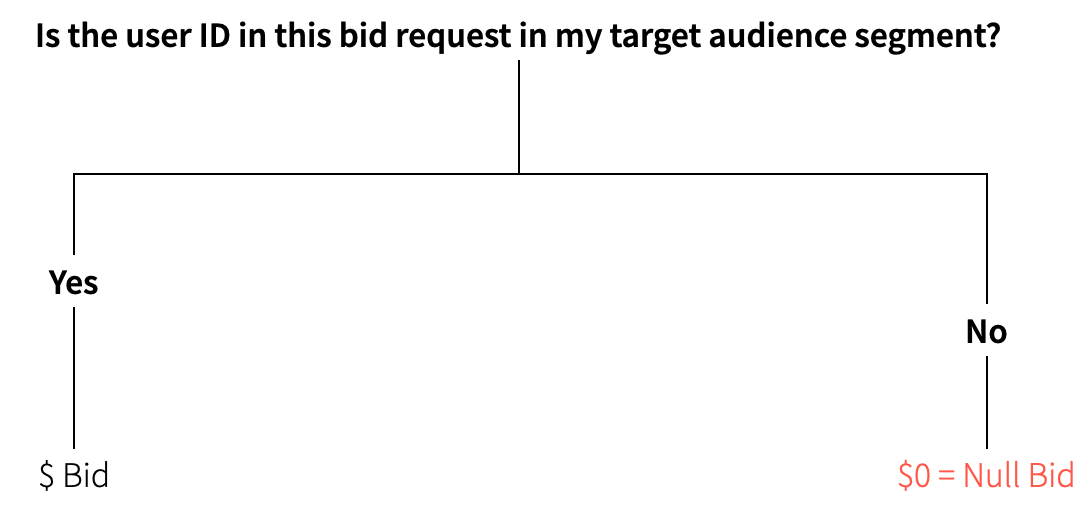#22: A Random Topic
FloCs flew away; New research paper dissecting DSP fees and the "unknown delta"
Welcome to Quo Vadis, your periodic source for fresh programmatic news and off-the-beaten-path perspective. Click here to join the conversation.
Today is National Lame Duck Day. Is there a better to get into FloCs and other random topics? Not a chance!
Random Topics
The ongoing search for cookieless bird species is evidently ending — no FLoCs could be found. Time to fly on. But where to, exactly?
Google's newest proposal (or clever art-of-war tactic) is a concept they call “Topics.” Ruben Schreurs at Ebiquity wrote a nice summary of Google’s proposal that will save you from having to read the actual documentation. I’d still recommend reading or at least skimming the source material anyway; that’s where your best questions will likely originate.
Topics API Documentation:
I’m guessing you already know that audience targeting with third-party cookies is a dying species at this point. Barring another Sun Tzu move from Google where they throw another cookie lifeline to the Axel Springers of the world, cookies will go extinct.
If you happen to be one of those folks under the assumption (or illusion) that audience targeting has always worked exactly as it’s been sold for years by the adtech panacea, then you should probably prepare yourself for the next best alternative (or least-worst). After all, “A bird in the hand is worth two in the bush” – John Ray's A Hand-book of Proverbs (1670).
Whatever it might be, the next best alternative is in the hands of every individual marketer. I wouldn’t recommend waiting around for someone else to make it happen — that plan hasn’t worked out very well so far. More on that below.
On the other hand, if you’ve read (and practiced) research like Nico Neumann’s (How Effective Is Third-Party Consumer Profiling And Audience Delivery?), then you already know cookie-based audience targeting never really worked very well; you won’t miss much when cookies are gone.
Radical Transparency
What do you want from programmatic audience targeting? Spend your ad budget or do great advertising or both?
What is true about programmatic audience targeting? What are the chances it works better than random?
Now, are you really practicing what is true to get what you want or just pretending?
Either way, what’s probably most helpful right now is a root-cause framework to put Google Topics — or whatever the next cookie replacement proposal might be — into perspective.
Programmatic Advertising = Audience Targeting
Programmatic advertising is synonymous with the ability to run ads on publisher sites, but only to a predesignated target audience of specific users.
For instance, when a marketer’s DSP gets an auctioned bid request from an ad exchange, its backend technology asks a very simple question before submitting a bid response back to the exchange.
If the answer is "yes," the DSP will calculate a bid price it wants to pay for that User ID plus the actual ad unit and submit it back to the exchange. The exchange will then select a winner amongst other competing DSP bids.
If the answer is "no," the DSP will submit a $0 bid price signaling a null bid to the exchange and wait for the next “opportunity.”
If you read Neumann’s research, you’ll see that audience targeting is likely no better than random selection. That means you’d be just as well off if the DSP flipped a coin to decide whether or not to bid.
In any case, the current programmatic ideology needs a belief system where marketers feel okay about buying a massive number of websites to find enough target IDs in the bid stream.
Trade-offs Matter: The rub is that’s where the easy supply of all the nasty stuff originates. Quo Vadis wrote about it a few weeks ago. If you want a full anthology of all the dirty stuff going on in programmatic land, check out Bob Hoffman’s Ad Contrarian and subscribe to his Saturday newsletter.
Bidding Without Audience Targeting
While the original invention of programmatic advertising came along to execute third-party audience-targeting at the individual user ID level, this doesn’t mean marketers can’t also use it for classic contextual ad campaigns.
For example, a DSP can also be used to buy ad impressions based on a specific list of certain websites that are believed to have contextually relevant content (e.g., food ads on recipe sites or sports gear on sports news websites).
In this case, a marketer’s DSP gets an auctioned bid request from an ad exchange but asks a different primary question before submitting a bid response back to the exchange.
If the answer is "yes," the DSP will calculate a bid price, submit it back to the exchange, and the exchange will select a winning DSP bid. If the answer is "no," the DSP will submit a $0 bid price.
Random Topics
With the above in mind, we can now put Topics Targeting into clearer context.
Let’s assume for a minute that we’ve overcome all the technical issues and challenges with Topics. In a Topics-led bid stream world, a DSP’s engine will ask a very different primary question when it gets a bid request. In this scenario, the topic becomes the main bid-decisioning criteria for a DSP.
If yes, then bid. If no, don’t bid.
Moral of the Story
Perhaps you’re wondering if the answer will actually be “yes” most of the time. If so, you just nailed it like a Price is Right winner!
Sure, audience targeting with Topics might turn out to be just as random as it is with today’s third-party cookies. But that hasn’t seemed to matter yet so there is no reason to start making better ad decisions using true probabilities and real math.
In fact, that’s the whole point. Whatever replaces third-party cookies will likely be the solution that helps the adtech supply chain get more “yes” answers than “no” answers.
“Yes” keeps those big ad budgets flowing.
“Yes” can have little or nothing to do with actual advertising in the Bill Bernbach sense.
“Yes” is the only incentive that matters in a system that appears to be too big to fail.
“No” is quite different:
“No” is what makes real advertising to real people about real topics.
“No” is what makes doing great advertising very difficult to pull off.
“No” is about incentives and people management more than anything else.
"Nobody counts the number of ads you run; they just remember the impression you make." – Bill Bernbach
My Advice for Advertisers (Not Ad Spenders)
1. Forget about audience targeting. Buy the biggest ad units you can find using contextual signals only (it’s not rocket science).
2. Buy known websites that are human-curated, human-certified by “Bezos” high standards, and use an attention metrics tag to collect advertising-relevant performance data.
3. Collect and match log data from every adtech supply chain partner you use, otherwise don’t use them (e.g., DSPs, SSPs, Verification, Ad Server, and Publishers too).
Following this advice is very likely the very best you can do with programmatic advertising. If your media mix model is tuned to minimize success bias, you’ll see what I mean.
DSP Fee Enlightenment
If you’re looking for some DSP enlightenment, you’ve come to the right place!
Check out my research paper called “How Marketers Think About Demand-Side Platforms (DSP) With Incomplete Information.”
What’s it about?
The paper is for marketers and other programmatic advertising stakeholders seeking clarity on how demand-side platforms (DSP) calculate fees based on “media cost.”
When “media cost” means one thing to a marketer, but quite another to a DSP, things get a little weird. As it turns out, there is a meaningful difference.
Some people call it the “unknown delta.” In economics, we simply call it a variable cost that DSPs must absolutely pass onto advertisers. But they don’t like to talk about it.
If they did, real DSP fees would be revealed and look much higher than marketers believe them to be today.
Why is this topic important?
If marketers have incomplete information on how the totality of DSP transaction fees are actually calculated and taken from their ad budget, then they can’t assess a DSP’s value as a service provider.
For instance, after accounting for pass-thru variable costs, real DSP fees can be ~40% higher on the low-end and many multiples higher depending on how the DSP’s dials are set.
Low end: You think you’re paying ~10%, but add on 5% in variable costs and now your DSP service is 50% higher.
High End: You think you’re paying ~10%, but your DSP passes through 20% in variable costs to cover their marginal costs of processing all those redundant bid requests. Voila, you’re paying 2x more than the clearing cost of your ads but the “media cost” cost report you get does not reveal it.
Marketers have been looking for years now to minimize programmatic transaction fees and maximize the amount of available "working media" that ends up buying ads. So understanding the difference between media cost reported by DSP platforms and the actual cost basis in the auction is probably a really big number to understand.
Ask Us Anything (About Programmatic)
If you are confused about something, a bunch of other folks are probably confused about the same exact thing. So here’s a no-judgment way to learn more about the programmatic ad world. Ask us anything about the wide world of programmatic, and we’ll select a few questions to answer in our next newsletter.
Join Our Growing Quo Vadis Community
Was this email forwarded to you? Sign up for our monthly newsletter here.









Great article, but aren't the Blue & Red pills reversed? Red = full truth which would be the deep dive?